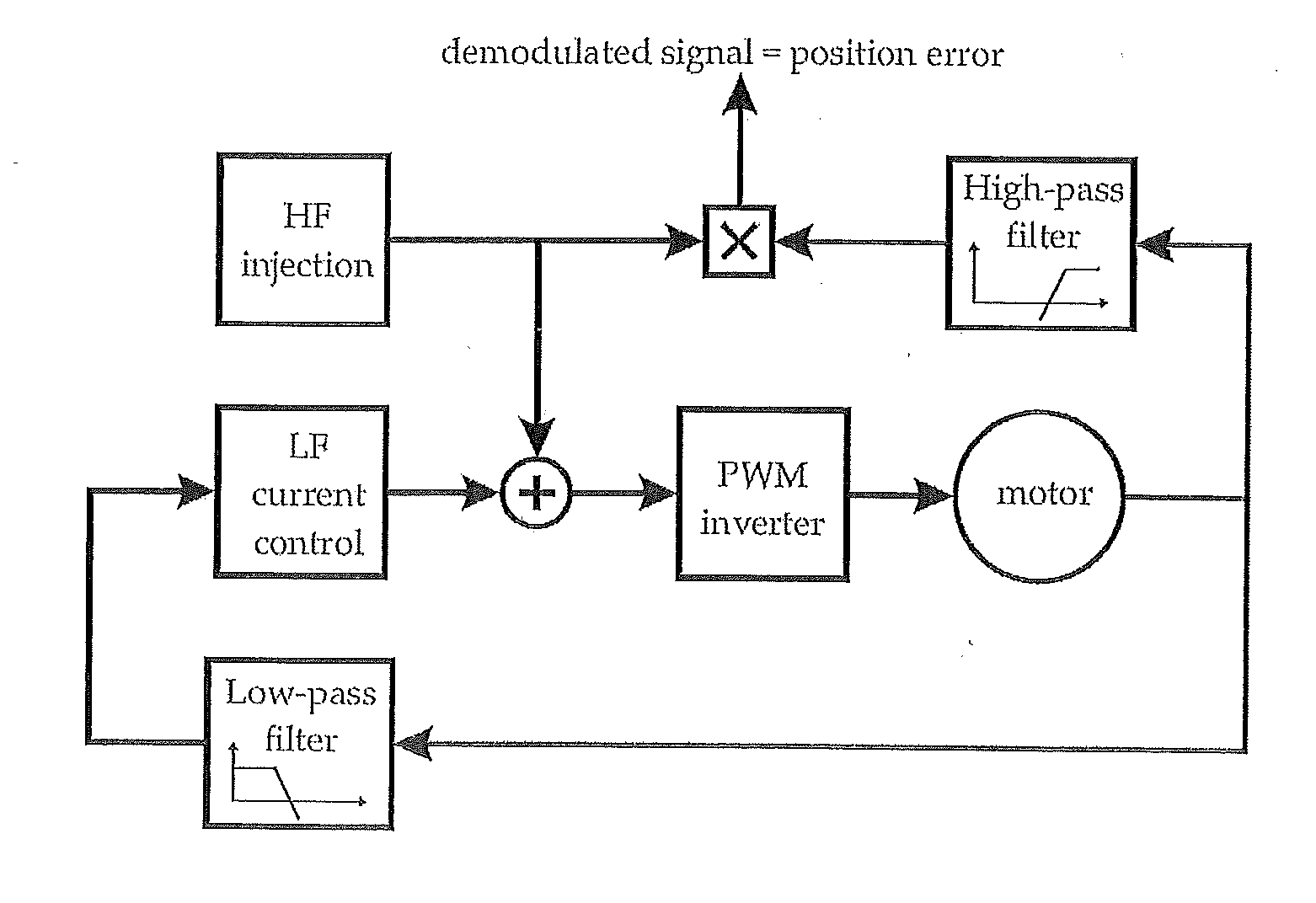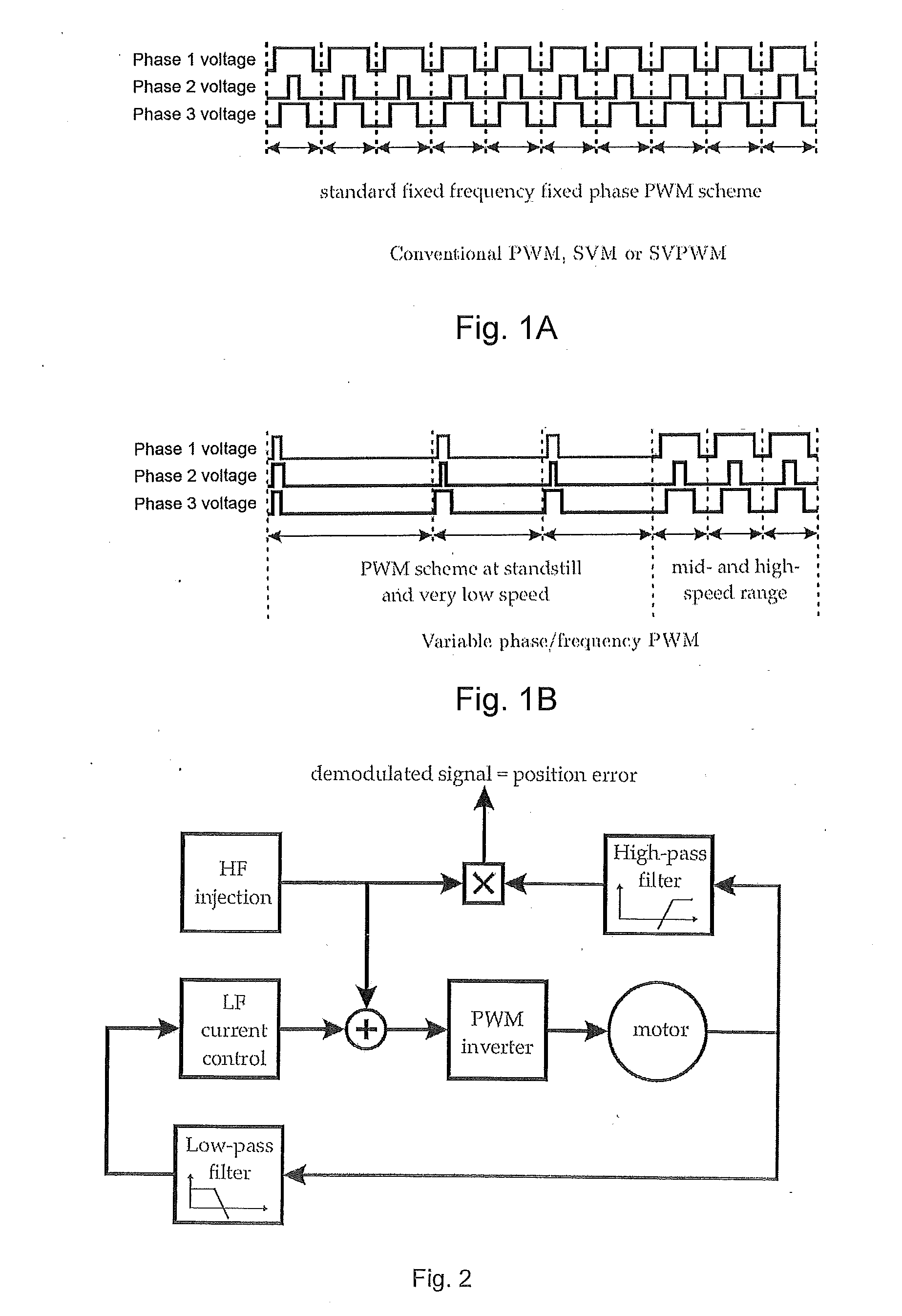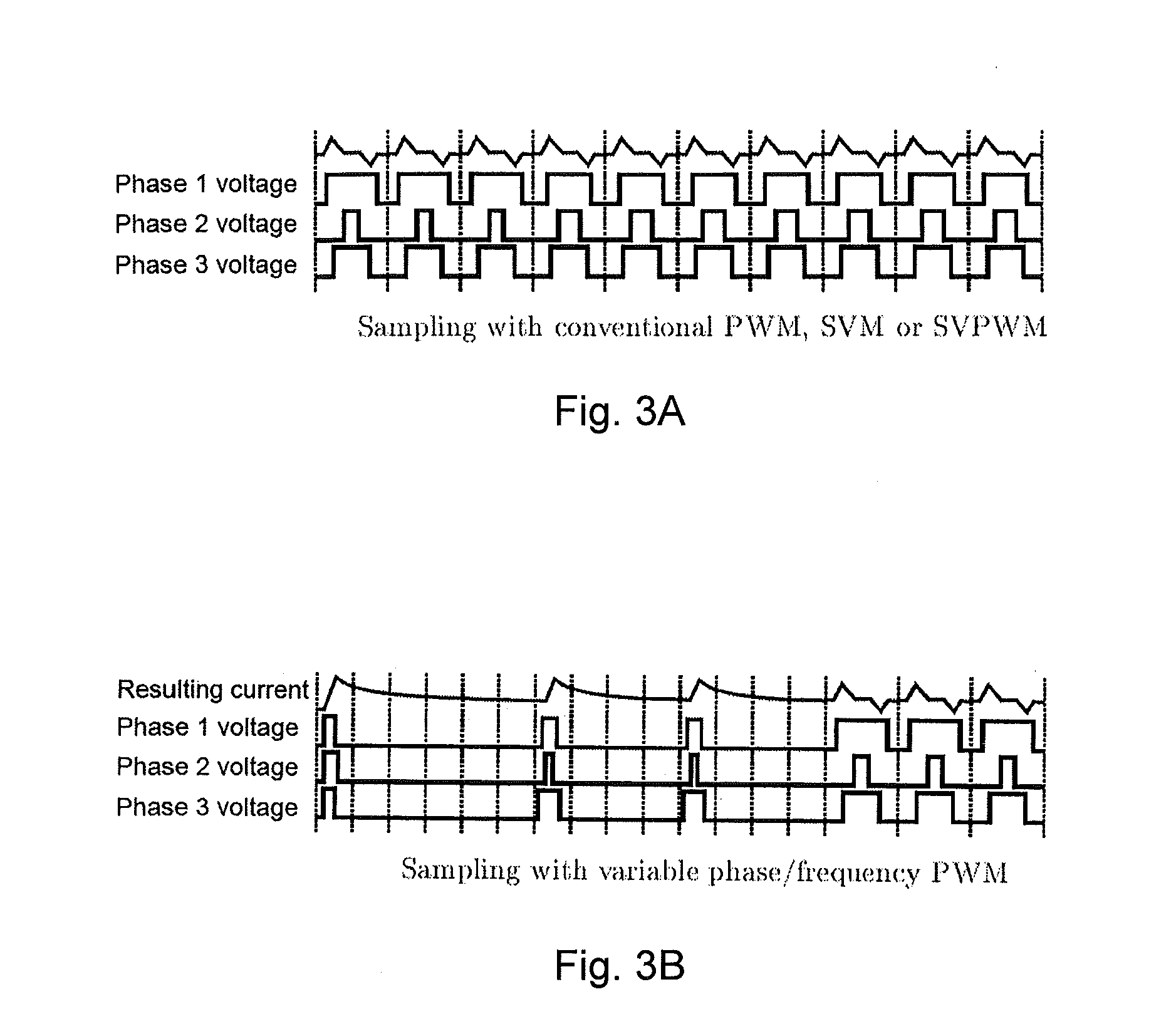Method for determining the position of a rotor of a polyphase motor
a polyphase motor and rotor technology, applied in the direction of electric digital data processing, control systems, instruments, etc., can solve the problems of inability to precisely determine the voltage applied to the system, the current cannot be measured precisely enough to determine the applied waveform in all situations, and the impact of the inverter distortion on the current waveform at standstill and at very low speed
- Summary
- Abstract
- Description
- Claims
- Application Information
AI Technical Summary
Benefits of technology
Problems solved by technology
Method used
Image
Examples
Embodiment Construction
[0030]The object of the present invention is to present a method of the generic kind that allows a precise determination of the rotor position at standstill and / or very low speeds.
[0031]The object is solved by the features of independent claim 1. According to the invention, determination of the rotor position is based on current values measured during a period where zero voltage is applied to the respective phases. The invention has the advantage that a mathematical model of the motor is simplified because terms comprising the voltage can be neglected. Furthermore, the invention allows that determination of the rotor position be based on the identification of the matrix of system time constants. The invention presents a solution to eliminate nearly totally the impact of the inverter distortion and thus to obtain very accurate estimate of the position.
[0032]Within the meaning of the present invention, the term “applying voltage to phases of the motor” also applies if a voltage is act...
PUM
 Login to View More
Login to View More Abstract
Description
Claims
Application Information
 Login to View More
Login to View More - R&D
- Intellectual Property
- Life Sciences
- Materials
- Tech Scout
- Unparalleled Data Quality
- Higher Quality Content
- 60% Fewer Hallucinations
Browse by: Latest US Patents, China's latest patents, Technical Efficacy Thesaurus, Application Domain, Technology Topic, Popular Technical Reports.
© 2025 PatSnap. All rights reserved.Legal|Privacy policy|Modern Slavery Act Transparency Statement|Sitemap|About US| Contact US: help@patsnap.com



